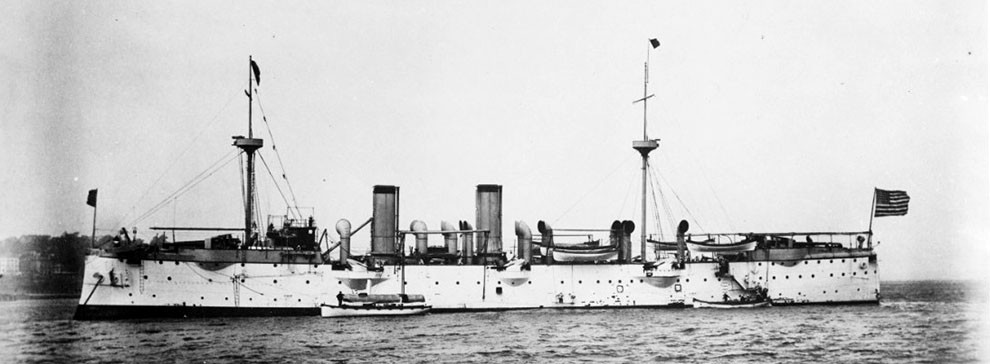
USS Baltimore (Cruiser #3, later CM-1)
The protected cruiser, USS Baltimore (Cruiser #3), was commissioned on January 7, 1890, at Philadelphia, Pennsylvania. Assigned as flagship to the North Atlantic Squadron, she conveyed the remains of the inventor John Ericsson from New York to Stockholm, Sweden, following his death. Joining the South Pacific Squadron in April 1891, she protected Americans during the Chilean revolution and later served as the flagship of Asiatic Station from 1893 until placed out of commission three-years later. Recommissioned in October 1897, Baltimore sailed to Hawaii, where she remained until the Spanish-American War in April 1898, taking part in the Battle of Manila Bay on May 1. Returning to New York two years later, she was placed out of commission until May 1903. Baltimore then served in the Caribbean, with the European Squadron, in the Far East, and as a reserve ship at New York until becoming the receiving ship at Charleston, South Carolina, from 1911 to 1912. Converted to a minelayer, she was recommissioned in March 1915. Following United States' entry into World War I, she laid mines during the North Sea Mine Barrage between Orkney Islands and Norway. In September 1919, Baltimore returned to the Pacific, where she was redesignated CM-1 a year later. Arriving at Pearl Harbor in early 1921, she was decommissioned in September 1922, where she later served as a storage hulk. In a state of disrepair, she was present during the Japanese Attack on Pearl Harbor on December 7, 1941. Sold in 1942, Baltimore was eventually scuttled at sea in September 1944.
A model of Baltimore was on display in the Spanish-American War section of the National Museum of the U.S. Navy, Bldg 76.
Image: NH 61901: USS Baltimore (Cruiser #3), at anchor, circa 1900. NHHC Photograph Collection.



